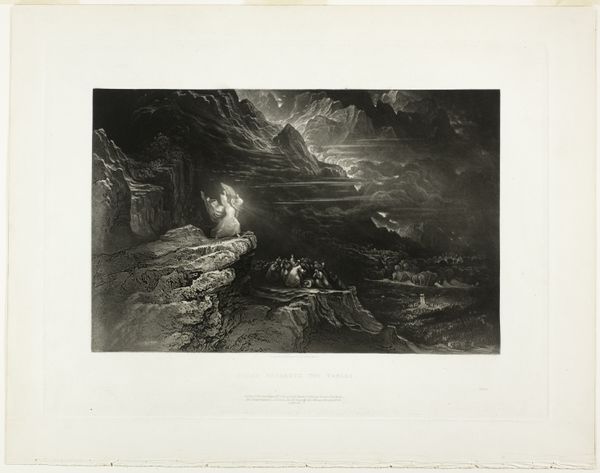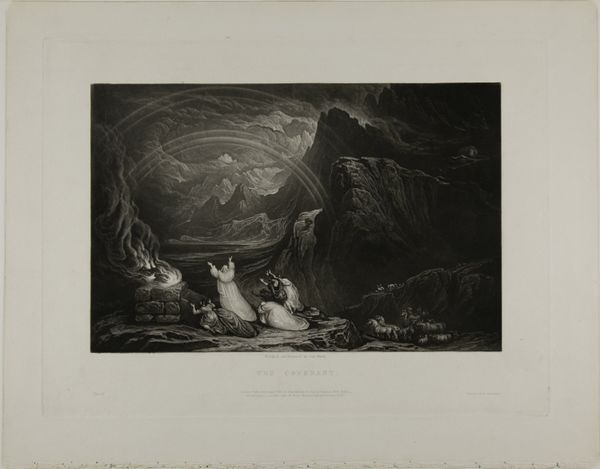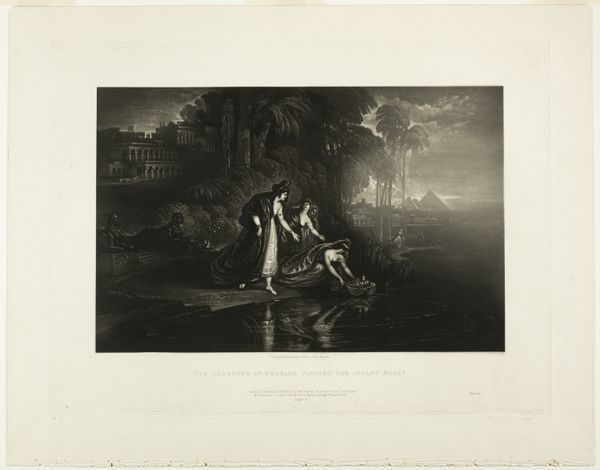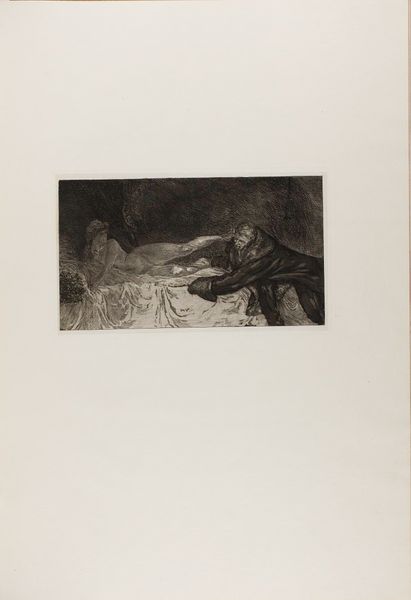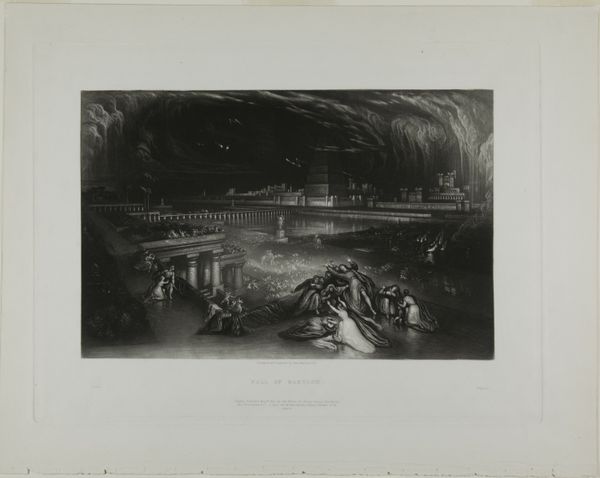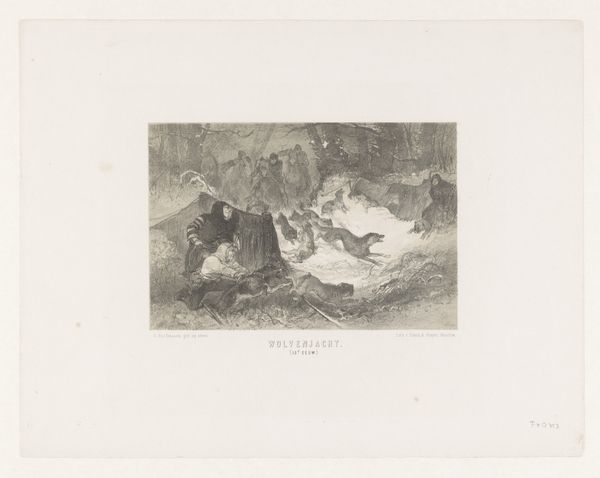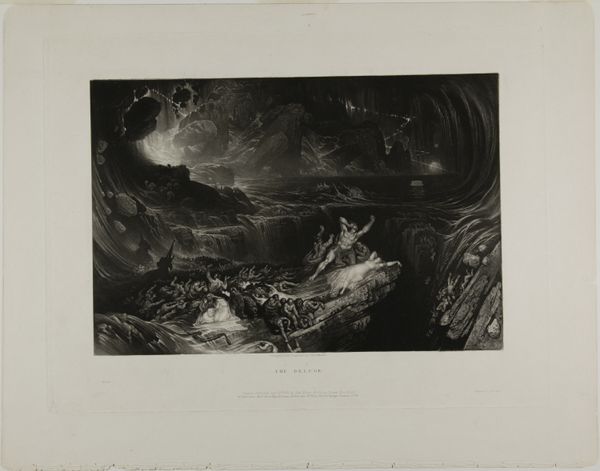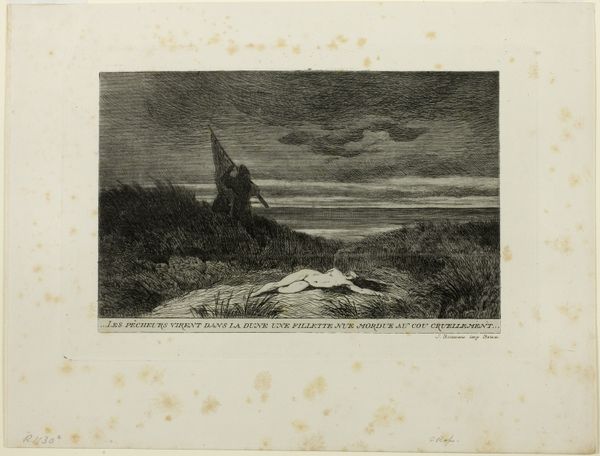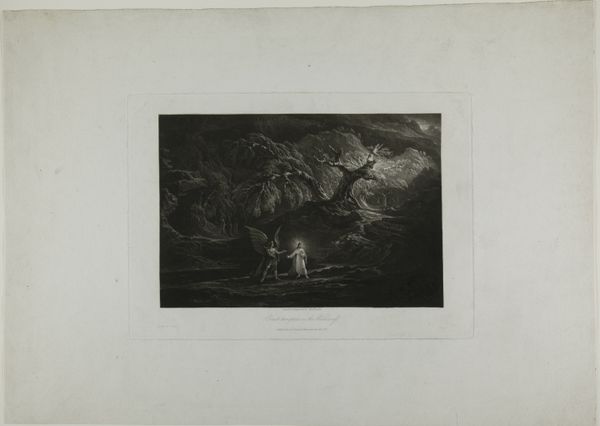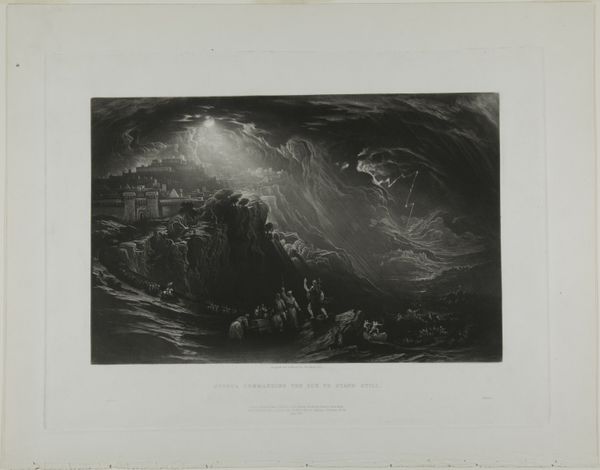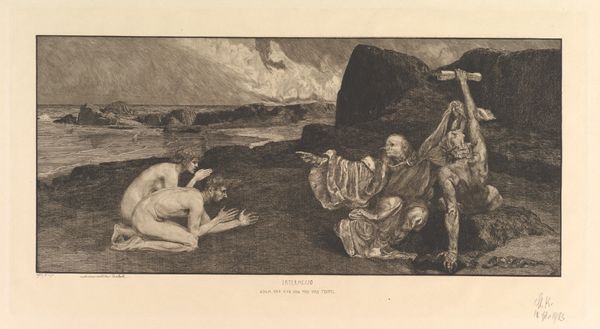
drawing, print, paper, engraving
#
drawing
# print
#
landscape
#
figuration
#
paper
#
england
#
romanticism
#
line
#
history-painting
#
engraving
Dimensions: 190 × 290 mm (image); 268 × 357 mm (plate); 329 × 416 mm (sheet)
Copyright: Public Domain
Curator: I'm struck immediately by the scale of dread; it’s like looking into the heart of a nightmare. Editor: Indeed. What we have here is John Martin's "The Death of Abel," an engraving from 1831, part of his "Illustrations of the Bible" series. Prints like these were really popular—mass-produced images bringing biblical scenes into British homes and shaping visual culture. It’s interesting to think of how affordable art democratized access, while still carrying its own class and cultural biases, of course. Curator: Absolutely, a point well taken. What hits me first is this stark contrast between light and shadow, it really amplifies the emotional intensity. Look at Cain, standing, almost imploring towards the heavens, juxtaposed with Abel's lifeless body, and his grieving family... there's a raw visceral feeling. Editor: Martin was a master of line work, crafting these deeply emotional scenes. The process itself involved meticulous labor, each line etched into the metal plate to produce dramatic contrasts and textures. It invites us to ponder how such scenes became mass produced, commercial objects viewed and consumed at the domestic level. It adds another layer to its narrative and symbolic weight, don't you think? Curator: I completely agree. The sheer drama! Martin isn't just depicting a historical scene, but amplifying the moral consequences. The landscape looms threateningly as if to punish this heinous crime against humanity, so much more powerful than just painting it... it has weight. Editor: Considering the historical context is crucial. Remember this was produced in the time when printmaking became extremely crucial, fueled by technological progress and industrial ambition. Think of the countless copies produced in the image circulation; such accessibility brought Martin's dark vision to the public which allowed and created moral and emotional response en masse. It wasn’t just art; it was a commodity imbued with immense ideological power. Curator: To consider that emotional impact replicated, spread far and wide throughout a nation through the medium is chilling! It truly makes one question, how far reaching and penetrating such materializations are in shaping collective consciousness... it seems boundless. Editor: Absolutely. Pondering this artwork allows us to reflect on our history and current moment... how do mass-produced images impact how we internalize history and perpetuate its meaning. Curator: Precisely. A stark, dramatic reminder rendered through labor and mass production for moral reflection.
Comments
No comments
Be the first to comment and join the conversation on the ultimate creative platform.
